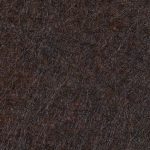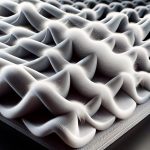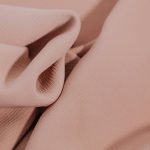To keep your top-grain leather sofa looking great, regularly dust it with a soft cloth and clean gently using a mild soap solution. Avoid harsh chemicals and too much water that can damage the leather. After cleaning, apply a quality leather conditioner every 6 to 12 months to keep it supple and prevent cracking. Act fast on spills by blotting, not rubbing. Stick to these tips, and you’ll maintain your sofa’s rich finish and durability. There’s more to learn about proper care techniques and maintenance.
Table of Contents
Key Takeaways
- Use a soft microfiber cloth and mild soap with warm water for gentle cleaning without damaging the leather surface.
- Blot spills immediately with a dry cloth, then lift residue with a slightly damp cloth, avoiding saturation.
- Condition your sofa every 6 to 12 months with high-quality leather conditioner to maintain suppleness and prevent cracking.
- Regularly dust with a soft cloth and keep the sofa away from direct sunlight to prevent fading and drying out.
- Avoid harsh chemicals and excessive water; seek professional cleaning for stubborn stains, cracks, or extensive discoloration.
Understanding Top-Grain Leather
Top-grain leather is the most popular choice for sofas because it balances durability with a smooth, attractive finish.
When you pick a top-grain leather sofa, you’re choosing leather that’s been sanded and buffed to remove imperfections, giving it a refined look.
Unlike full-grain leather, top-grain is more resistant to stains and easier to clean, but it still retains much of the natural texture and strength.
Top-grain leather combines stain resistance and easy cleaning while preserving natural texture and durability.
You should know that it’s coated with a protective layer, which helps guard against spills and wear.
This means your sofa will age gracefully, developing a unique patina over time.
Understanding these qualities helps you appreciate why gentle, regular cleaning is essential to maintain its beauty and longevity.
Essential Tools for Cleaning
To clean your top-grain leather sofa effectively, you’ll need the right tools at hand.
Choosing the proper cleaning cloths, safe cleaning solutions, and protective gloves will protect both your leather and your skin.
Let’s explore what gear works best to keep your sofa looking great.
Cleaning Cloth Types
Choosing the right cleaning cloth can make a big difference when maintaining your leather sofa. You want something gentle yet effective to avoid scratching or damaging the top-grain leather.
Here are three types of cloths you should consider:
- Microfiber Cloths: Soft, lint-free, and excellent for picking up dirt without harming leather.
- Cotton Cloths: Natural, breathable, and ideal for light cleaning and applying conditioners.
- Chamois Leather: Absorbent and smooth, perfect for drying and buffing your sofa to a shine.
Avoid abrasive materials or rough fabrics that can wear down the leather finish.
Always make certain your cloth is clean before use to prevent transferring dirt back onto your sofa.
Selecting the right cloth helps keep your leather looking pristine and extends its lifespan.
Recommended Cleaning Solutions
Several cleaning solutions work well for maintaining your leather sofa’s appearance without causing damage.
You can use a mild soap mixed with warm water—just a few drops of dish soap in a bowl of water will do. Avoid harsh chemicals or anything with ammonia.
Leather-specific cleaners are also a great choice; they’re designed to gently lift dirt and oils without drying out the leather.
For a natural option, diluted white vinegar works well but test it on a hidden spot first to verify it doesn’t affect the color.
Always apply the solution with a soft cloth, never pour directly onto the leather.
Using these recommended solutions regularly will keep your sofa looking fresh and extend its life.
Protective Gloves Use
While cleaning your top-grain leather sofa, wearing protective gloves helps safeguard your skin from irritation caused by cleaning solutions. Many leather cleaners contain chemicals that can dry out or irritate your hands, so gloves act as a barrier.
You’ll also avoid accidental allergic reactions or staining from the cleaning agents. When choosing gloves, look for options that fit well and provide dexterity so you can clean thoroughly without discomfort.
Here’s why gloves are essential:
- Prevent skin irritation and dryness
- Protect against allergic reactions to cleaning products
- Improve grip and control when handling cleaning tools
Wearing protective gloves guarantees your cleaning process is safe and effective, keeping both your sofa and your hands in great condition.
Preparing Your Sofa for Cleaning
Before you start cleaning your top-grain leather sofa, make certain to remove any loose cushions and vacuum the surface thoroughly. This clears away debris that could scratch the leather during cleaning.
Next, check for any stains or spots that might need special attention later. Use a soft cloth to wipe down the entire sofa gently, helping to assess its current condition.
Avoid using any harsh chemicals or water at this stage, as they can damage the leather. If your sofa has any metal or wooden accents, protect them with painter’s tape to prevent damage.
Removing Dust and Loose Dirt
Since dust and loose dirt can easily embed into leather’s pores, you’ll want to remove them carefully to avoid damage.
Dust and dirt settle into leather’s pores, so gentle removal is essential to prevent damage.
Begin by gently brushing the sofa’s surface with a soft, dry cloth or a microfiber duster to lift away particles without scratching the leather. Avoid using harsh or abrasive tools, as they can cause wear.
You can also use a vacuum cleaner with a brush attachment to suck up dirt from crevices and seams without pressing too hard.
Here are three key tips to keep in mind:
- Use a soft brush or microfiber cloth for dusting.
- Vacuum with a soft brush attachment to reach tight corners.
- Avoid vigorous scrubbing or wet cloths at this stage to prevent damage.
This careful approach keeps your leather looking pristine and ready for deeper cleaning.
Cleaning With a Mild Soap Solution
A mild soap solution gently cleans top-grain leather without stripping its natural oils. To prepare it, mix a few drops of gentle liquid soap with warm water. Dampen a soft cloth in the solution and wring it out well—too much water can damage the leather. Wipe your sofa using gentle circular motions, focusing on small sections at a time. After cleaning, use a dry cloth to remove any moisture.
| Step | What to Use | Tips |
|---|---|---|
| Prepare Solution | Mild liquid soap, water | Use lukewarm water only |
| Dampen Cloth | Soft microfiber cloth | Wring out excess liquid |
| Clean Sofa | Soap solution cloth | Work in small sections |
| Dry Surface | Dry soft cloth | Avoid leaving moisture |
Dealing With Stains and Spills
When a spill happens, act quickly to prevent stains from setting.
Use cleaning products that are safe for top-grain leather to avoid damage.
Immediate Stain Response
If you spill something on your top-grain leather sofa, act quickly to prevent permanent stains.
First, gently blot the spill with a clean, dry cloth—never rub, as that can push the liquid deeper.
Next, use a slightly damp cloth to lift any remaining residue, but avoid saturating the leather.
Finally, let the area air dry naturally, away from direct heat or sunlight to prevent discoloration or cracking.
Remember these quick steps:
- Blot spills immediately with a soft cloth
- Use minimal water to clean the spot
- Air dry away from heat sources
Responding fast limits damage and keeps your leather looking pristine. The right approach now saves you from tougher cleaning later.
Suitable Cleaning Products
Choosing the right cleaning products plays an essential role in preserving your top-grain leather sofa’s appearance and durability.
You want to use products specifically designed for leather to avoid damaging the finish or drying out the material. Look for pH-balanced leather cleaners and conditioners that gently lift dirt and nourish the leather.
Avoid harsh chemicals, bleach, or ammonia-based cleaners, as they can strip the leather’s natural oils and cause cracking. For small stains, a mild soap solution mixed with distilled water can work, but test it on an inconspicuous spot first.
Always use soft, lint-free cloths when applying products to prevent scratching. Using suitable cleaning products regularly helps maintain your sofa’s softness and rich look over time.
Blotting vs. Rubbing
Although spills on your top-grain leather sofa can be stressful, knowing how to respond quickly makes all the difference. When a spill happens, never rub the stain; rubbing can push liquids deeper into the leather and cause damage.
Instead, gently blot the area with a clean, dry cloth to absorb as much liquid as possible. Here’s what you should do:
- Blot spills immediately to prevent absorption.
- Use a soft, lint-free cloth for blotting.
- Avoid rubbing or scrubbing, which can spread stains and harm the leather’s surface.
Conditioning Your Leather Sofa
Properly conditioning your leather sofa keeps it supple and extends its lifespan.
After cleaning, apply a high-quality leather conditioner to restore moisture and prevent cracking. Use a soft cloth to evenly spread a small amount of conditioner over the surface, paying close attention to seams and creases. Let it absorb naturally for several hours or overnight.
Avoid over-conditioning, which can make the leather sticky or attract dirt. Conditioning creates a protective barrier that maintains flexibility and enhances appearance.
Make it a routine every 6 to 12 months, depending on your environment and usage. By regularly conditioning your sofa, you’ll preserve its natural texture, prevent dryness, and keep it looking fresh and inviting for years to come.
Avoiding Common Cleaning Mistakes
When cleaning your top-grain leather sofa, steer clear of harsh chemicals that can damage the finish.
Don’t soak the leather with too much water, as over-wetting can cause stains and warping.
Keeping these mistakes in mind will help preserve your sofa’s look and feel.
Using Harsh Chemicals
Since harsh chemicals can damage the finish and texture of your top-grain leather sofa, you should steer clear of using bleach, ammonia, or other strong cleaners.
These substances can strip the leather of its natural oils, causing it to dry out, crack, or discolor. Instead, opt for mild, pH-balanced cleaners designed specifically for leather care.
Keep these tips in mind to protect your sofa:
- Avoid household cleaners containing alcohol or solvents.
- Test any new cleaner on a small, hidden area first.
- Use soft cloths or sponges to apply products gently.
Over-Wetting Leather
Although it might seem like more moisture means better cleaning, over-wetting your top-grain leather sofa can actually cause serious damage. When leather soaks up too much water, it weakens the fibers, leading to warping, discoloration, or even mold growth.
Avoid soaking your cleaning cloth; instead, dampen it lightly and wipe gently. After cleaning, dry the surface promptly with a soft, dry towel to prevent moisture from seeping in.
Remember, leather is porous and sensitive to excess water, so using minimal liquid protects its natural oils and keeps it supple. By controlling moisture during cleaning, you’ll maintain your sofa’s appearance and durability for years to come.
Always err on the side of dryness rather than saturation when caring for your leather furniture.
Tips for Daily Maintenance
Daily maintenance plays an essential role in preserving the beauty and durability of your top-grain leather sofa.
By incorporating simple habits into your routine, you can prevent dirt buildup and keep the leather supple and vibrant. Here are some effective daily maintenance tips:
- Dust regularly: Use a soft, dry cloth to gently remove dust and prevent particles from embedding in the leather.
- Avoid direct sunlight: Position your sofa away from windows or use curtains to prevent fading and drying out.
- Wipe spills immediately: Blot liquids with a clean cloth to avoid stains and moisture damage.
Following these steps consistently helps your leather sofa look its best and extends its lifespan without causing harm or over-wetting.
When to Seek Professional Help
If your top-grain leather sofa shows signs of stubborn stains, cracks, or wear beyond simple cleaning, it’s time to call in a professional.
Attempting to fix deep damage yourself can worsen the problem or void warranties. Professionals have specialized tools and leather care products designed to safely restore your sofa’s appearance.
DIY repairs can cause more harm or void warranties; trust professionals for safe and effective leather restoration.
You should also seek help if your sofa has extensive discoloration or if home remedies fail repeatedly. Regular professional cleaning every few years can maintain your sofa’s condition and extend its life.
Don’t hesitate to reach out if you notice peeling, large scratches, or persistent odors. Taking this step guarantees your sofa stays beautiful and durable without risking costly mistakes.
Frequently Asked Questions
Can I Use Vinegar to Clean Top-Grain Leather Sofas?
You shouldn’t use vinegar on top-grain leather sofas because it’s acidic and can damage the leather. Instead, opt for a cleaner specifically made for leather to keep it soft and looking great without risk.
How Often Should I Replace My Leather Sofa’s Conditioner?
You should replace your leather sofa’s conditioner every 6 to 12 months, depending on usage and climate. Regular conditioning keeps the leather soft and prevents cracking, so don’t skip this essential step for lasting beauty.
Is It Safe to Use a Steam Cleaner on Top-Grain Leather?
You shouldn’t use a steam cleaner on top-grain leather because the heat and moisture can damage it. Instead, stick to gentle leather cleaners and conditioners to keep your sofa looking great without risking harm.
Can Pet Hair Damage Top-Grain Leather Sofas?
Pet hair’s like tiny needles; if you let it pile up, it can scratch and dull your top-grain leather sofa. Regularly brushing away pet hair helps you keep your leather looking smooth and fresh.
What Temperature Is Best for Cleaning Leather Sofa Covers?
You should use lukewarm water—around 86°F (30°C)—when cleaning leather sofa covers. Hot water can damage the leather, while cold water might not clean effectively. Lukewarm strikes the perfect balance for gentle cleaning.
- How Long Do Percale Sheets Last? A Guide to Durability - July 14, 2025
- Are Percale Sheets Better Than Regular Cotton Sheets? - July 14, 2025
- What Is the Difference Between Cotton and Cotton Percale? - July 14, 2025







